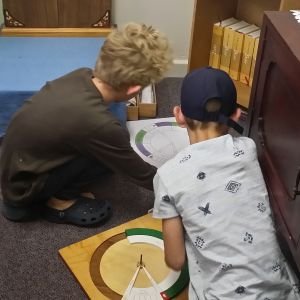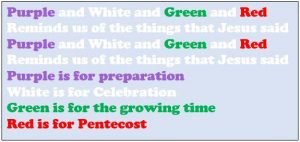Did you know that prior to the second Vatican Council the Church had only two readings for each Mass (these were a reading from the Epistles and the Gospel, readings from the Old Testament were rarely used), on a one year cycle? The same readings were used each year. Since Vatican II, each Sunday Mass has three readings have been used, one from the Old Testament (except after Easter where NT readings are used), the Second from the New Testament Epistles and the Gospel. These were used over a three year cycle. The intention was to expose the congregation to more of the Biblical texts. The weekday readings would also be expanded to a two year cycle with two readings at each Mass.
To figure out which year we are in, here’s a little trick; if the year is divisible by 3 then you are in year C. The years cycle alphabetically. In Year A the primary Gospel is that of Matthew, year B the Gospel is primarily Mark and year C it is Luke. The Gospel of John is proclaimed on particular Sundays in each of the three years. For the weekdays Year 1 are the odd years, Year 2 the even.
The Liturgical Year begins with the First Sunday of Advent and concludes with the Feast of Christ the King. Like any calendar it celebrates special occasions or feasts and has seasons. The six seasons emphasis different parts of the life of Jesus. They are: Advent, Christmas, Lent, Easter Triduum (three events – Holy Thursday, Good Friday, Easter Sunday), Easter, Ordinary Time. Each season is highlighted by using particular colours.

In the atrium of the Catechesis of the Good Shepherd we highlight for the children three major feasts: Easter, Christmas and Pentecost. We celebrate the way God interacts with people through these great events.
We mark the passing of seasons through the use of liturgical colours on our prayer table and in some of the atrium works. We talk about the seasons through the liturgical colours. Purple (used in lent and advent) is for preparing for the feast to come. White, the colour we use at Baptism, the colour of the light, is for the great feasts of celebration (Easter and Christmas). Green, the colour of new leaves of growing things, is for the Ordinary Time, that long time between feasts where thewoders of Jesus sit within us and grow and form us. And red the colour of fire, the flame of Pentecost and the Holy Spirit. One of the songs the children love to sing to hep them remember the colours and what they mean has these words:

We meditate specifically on the church liturgical cycle using the Liturgical Calendar. The calendar is circular, as it represents that the years continue in a pattern that repeats. The calendar is read in an anticlockwise direction, to remind us that this is not the same time we live in, it is not like a clock, but it is different. It is God’s time.